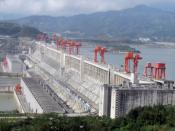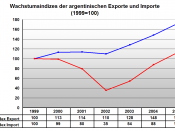Salient Features:Economic system in transition, cautiously moving away from Soviet-style central planning and gradually adopting market economy mechanisms and reduced government role. Industry, largely based on state and collective ownership, marked by increasing technological advancements and productivity. China's people's communes (see Glossary) eliminated by 1984--after more than twenty-five years--and responsibility system (see Glossary) of production introduced in agricultural sector. Private ownership of production assets legal, although major nonagricultural and industrial facilities still state owned and centrally planned. Restraints on foreign trade relaxed and joint ventures encouraged.
Industry: In 1985 employed about 17 percent of labor force but produced more than 46 percent of gross national product (GNP). Fastest growing sector; average annual growth of 11 percent from 1952 to 1985. Wide range of technological levels; many small handicraft units; many enterprises using machinery installed or designed in 1950s and 1960s; significant number of big, up-to-date plants, including textile mills, steel mills, chemical fertilizer plants, and petrochemical facilities but also burgeoning light industries producing consumer goods.
Produced most kinds of products made by industrialized nations but limited quantities of high-technology items. Technology transfer by importing whole plants, equipment, and designs an important means of progress. Major industrial centers in Liaoning Province, Beijing-Tianjin- Tangshan area, Shanghai, and Wuhan. Mineral resources included huge reserves of iron ore; adequate to abundant supplies of nearly all other industrial minerals. Outdated mining and ore processing technologies gradually being replaced with modern techniques.
Agriculture: In 1985 employed about 63 percent of labor force; proportion of GNP about 33 percent. Low worker productivity because of scanty supplies of agricultural machinery and other modern inputs. Most agricultural processes still performed by hand. Very small arable land area (just above 10 percent of total area, as compared with 22 percent in United States) in relation to size of country and...


